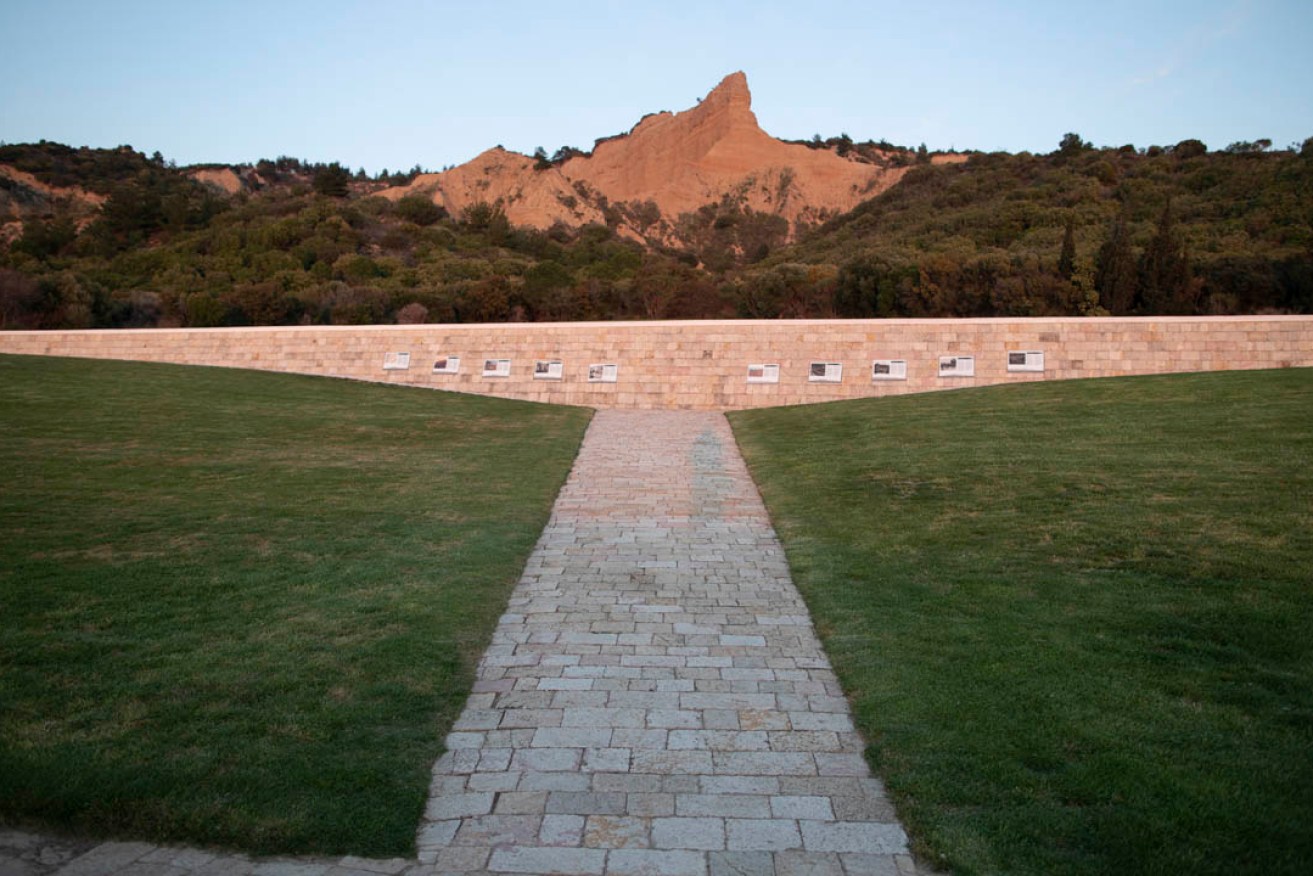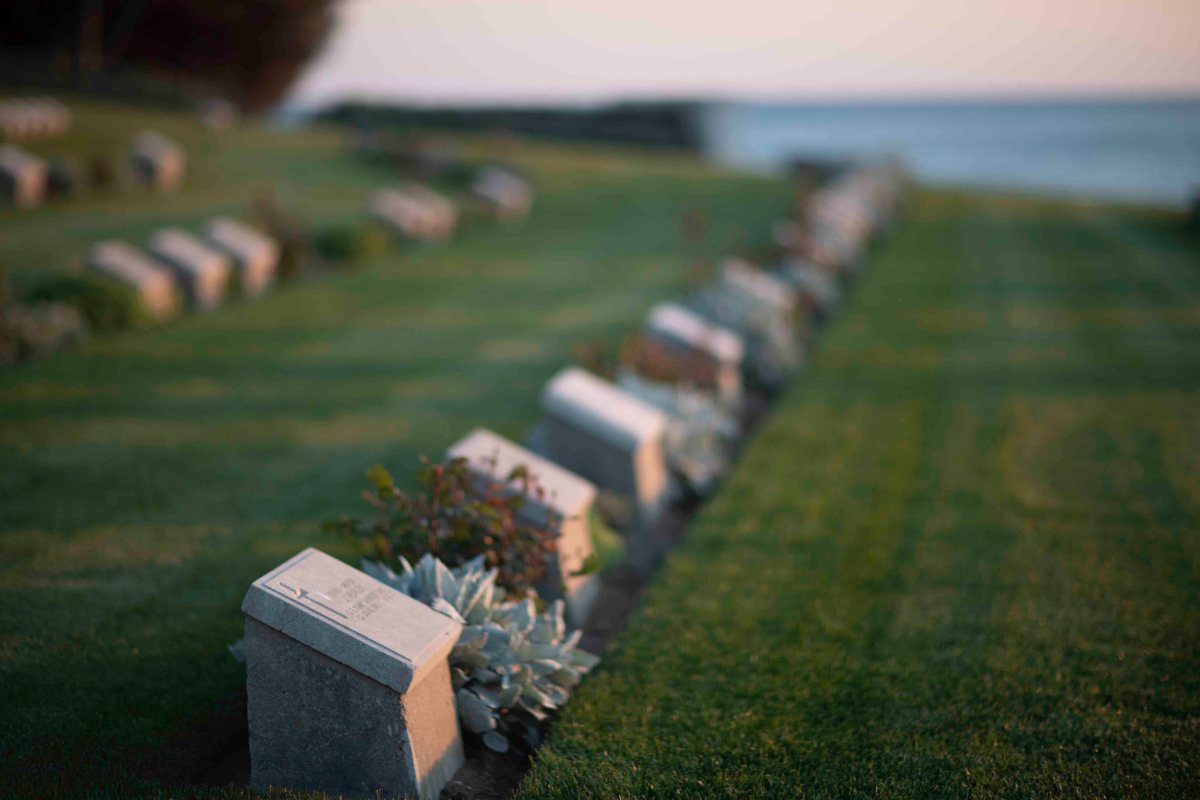Memories of Gallipoli
Ten years ago, former Premier Mike Rann visited Gallipoli for the first time. Here’s what has stayed with him, a decade on.


ANZAC Cove on the Gallipoli peninsula during sunset, with the once treacherous cliffs in the background. Photo: EPA/Tolga Bozoglu
In 2014, shortly before ANZAC Day, I visited Gallipoli as a member of the Commonwealth War Graves Commission. With my New Zealand counterpart, we crossed the Dardanelles by car ferry from Canakkale and then drove to ANZAC Cove, playing the songs ‘The Band played Waltzing Matilda’ and ‘Maori Battalion’ in our van.
Without crowds, speeches and hymns there was a quiet, poignant beauty to a coastline of towering hills, rugged cliffs, a sea of deepest blue, and beaches that reminded us of home. At first, there was no sense of the bloodstained slaughter and noisy mayhem of 99 years before. The only sound we heard was the gentle lapping of the waves on the shore.
We visited the sacred places of our shared national memories: Lone Pine, Shrapnel Valley and Chunuk Bair where the New Zealand memorial faces a giant statue of Ataturk, whose moving words embracing fallen enemies are now engraved on the memorial at ANZAC Cove.
We visited cemeteries that were once small, intense battlefields, only a dozen or so yards sometimes separating opposing trenches. Our soldiers were buried where they fell, but in places now ablaze with irises, pink flowering Judas trees, the purple flowers of wild thyme and hedges of rosemary.
We met the Turkish gardeners, a number of whom were the great-grandsons of those who originally tended the graves. At The Nek, we stood on a ridge where four waves of Australian Light Horsemen were mown down. It was where Charles Bean wrote that “the flower of the youth of Victoria and Western Australia fell”.
At Beach Cemetery we paid our respects at the grave of John Simpson, the stretcher bearer who, with his donkey, cared for his mates.
Further down the Peninsula we visited a cemetery where 10,000 of our French allies were buried, and saw the imposing memorial at Helles Point acknowledging the 21,000 British as well as soldiers from India and Newfoundland who died there.
We visited deep gullies and ridges that had once been a living hell, the ANZACs and their allies stuck with no hope of advance. Instead, they faced slaughter: machine-gunned or shelled from above, or picked off by snipers.
And then there were the flies, plagues of them in the hot summer that followed. From this enemy, there was no escape. They were eaten with the diggers’ bully beef and swallowed with their water. No endeavour was spared from this foul pestilence. And with the flies, feeding on the decomposing bodies of friend and foe alike, came disease. Thousands were felled by dysentery.
With winter came the bitter cold that many said was even worse than the daily shelling. Frostbite, and at Helles Point, reports of sentries found frozen dead where they stood, their rifles still in their hands.

The ANZAC cemetery at ANZAC Cove. Photo: EPA/Tolga Bozoglu
Over time there grew a mutual respect between the allies and the Turkish soldiers they confronted. Its most practical manifestation came during the tense ceasefires that allowed both sides to bury their dead. There were stories of cigarettes and souvenirs being swapped and tinned food exchanged for grapes and sweets.
More than anything it was the inscriptions on the Australian headstones that are fused in my memory.
Sure, some said “died for God, King and Country” but it was the more personal, the more intimate, that were most powerful. “My darling only son”, or “From your wife and four young children”, or “Left our farm a boy, died a man”, or the last words of a dying Aussie soldier to the mate who was holding him in his arms “God bless you, Cobber”.
Most of all I will remember the soft, plaintive cry of a mother, with her inscription “We miss you at home” – a sentiment of sacrifice experienced so often in the 11 decades since by so many other mums, partners and children of our soldiers lost in places as far apart as Alamein, Crete, the Burma Railway and New Guinea; Kapyong in Korea; Long Tan in Vietnam, and of course in Iraq and Afghanistan.
ANZAC should also remind us of the importance of the word “ally”. It was as allies on the Gallipoli Peninsula that an unbreakable bond grew between Australia and New Zealand, forged in mud and blood in a conflict that helped shape our identities back then and who we are today.
So as we commemorate sacrifice, we remember those who were prepared to give everything for the next generations, for us. We remember their talents, their unfulfilled promise, the years never spent with their sweethearts and children.
At dawn services around the nation, the sound of the bugle salutes the everlasting bond between the living and the dead, a handshake of thanks across the void. For me, however, I will always remember the inscription, the mother’s lament, I saw on that grave at Gallipoli: “We miss you at home.”
Mike Rann, a former Premier of South Australia, was the Australian High Commissioner to the UK from 2012 to 2014. At the time he was also Australia’s Commonwealth War Graves Commissioner and a Trustee of the Imperial War Museum. His father served with the British Army at Dunkirk, El Alamein and Monte Cassino and his grandfather fought at The Somme.




